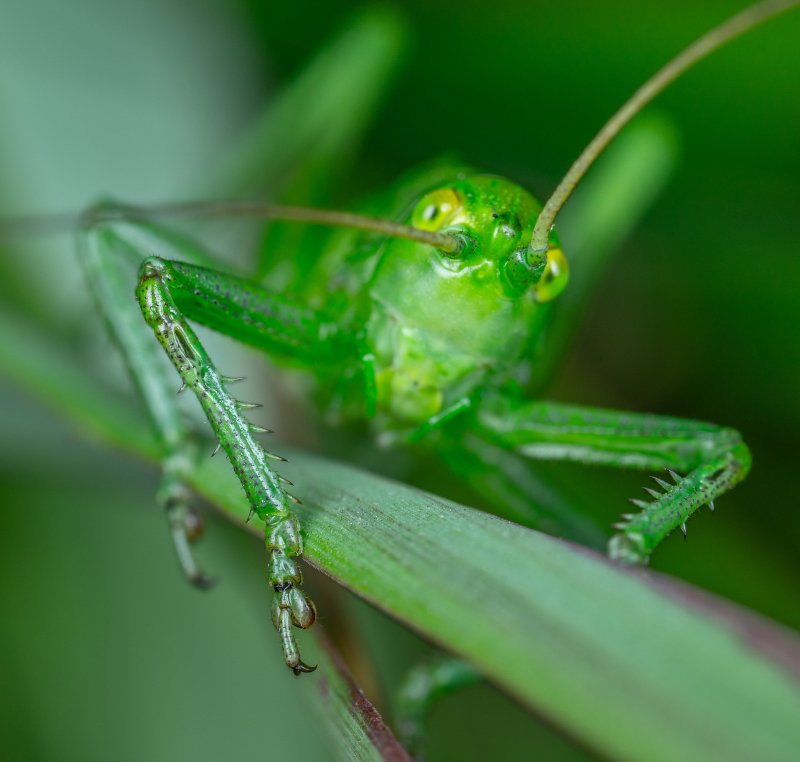Katydids
Katydids, belonging to the family Tettigoniidae, are fascinating insects known for their remarkable ability to produce distinctive, rhythmic calls that echo through the night. These nocturnal creatures play important roles in various ecosystems, contributing to both the natural symphony of sounds and essential ecological processes.
Katydids display a diverse array of shapes, sizes, and colors, adapting to their varied habitats. Generally, they have long, slender bodies with large, leaf-like wings that resemble green foliage, aiding in camouflage. Some species exhibit vibrant colors, while others mimic the appearance of bark or leaves, enhancing their camouflage during the day.
Katydids are primarily nocturnal, showcasing heightened activity during the night. Their nocturnal lifestyle helps them avoid diurnal predators, as their leaf-mimicking wings provide effective camouflage in the foliage. During the day, they often rest in hidden locations, blending seamlessly with their surroundings.
One of the most remarkable features of katydids is their ability to produce intricate and rhythmic calls, which serve various purposes such as attracting mates and establishing territory. The calls are generated by rubbing specialized structures on their wings, a behavior known as stridulation. Each species has its unique call, contributing to the diversity of sounds in nighttime environments.
Katydids are herbivorous, primarily feeding on leaves, flowers, and other plant materials. Their feeding behavior can have ecological implications, influencing plant growth and vegetation dynamics. Some species also exhibit cannibalistic tendencies, preying on smaller insects or even other katydids.
The life cycle of katydids typically involves incomplete metamorphosis, consisting of egg, nymph, and adult stages. The eggs are often deposited in soil or plant material, and the nymphs undergo a series of molts before reaching adulthood. The length of the life cycle varies among species and is influenced by factors such as temperature and food availability.
Katydids play essential roles in ecosystems as both herbivores and contributors to the food web. Their feeding habits influence plant communities, while they, in turn, serve as prey for a variety of predators, including birds, bats, and spiders. The calls of katydids also contribute to the complex tapestry of sounds in the night, influencing the behavior of other organisms.
Katydids have found a place in various cultures and traditions, often symbolizing different qualities. In some cultures, their calls are believed to foretell changes in weather or other natural events. Additionally, the unique sounds of katydids have inspired poets, writers, and artists, contributing to their cultural significance.
















